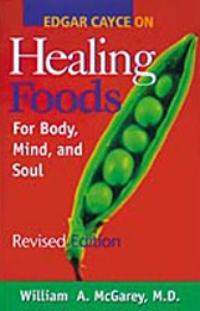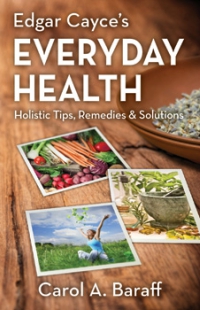Many of us were raised with adages like, “A spoonful of sugar helps the medicine go down,” and “You can catch more flies with honey than vinegar.” Loved ones are referred to as “sweetheart,” “honey,” or even “sugar.” Desserts are often the main attraction of a restaurant menu. High-sugar soda is a top beverage choice. We are a nation of sweet tooths! The Edgar Cayce health information tackled this age-old problem in many readings with a simple rule, “Refrain from sweets.” Cayce health reading 259-10, and more than 500 similar ones, spelled out this dietary recommendation very clearly, but cutting back on sugary beverages and foods is definitely not something most people in Cayce’s day or in 2018 want to do. The recipient of another reading pushed back, “Will an occasional dessert using saccharin or honey be alright?” The response was adamant:
If it had been, we would have given it! Do you want to get rid of the trouble, or do want to keep it in the place it is?
- Edgar Cayce reading 348-18
We Americans are sugar addicts! Sugar consumption is at an all-time high in the United States. The average American consumes three pounds of sugar each week—that’s156 pounds of sugar per year! The dramatic increase in sugar consumption since the 1970s coincides with the doubling in obesity rates, diabetes, high blood pressure, mood disorders, and other chronic health issues.
As with so many commodities, the story of sugar consumption in America started hundreds of years ago. Sugar cultivation began in the European colonies with slave labor. Sugar was promoted as a healthy and special food, and it was depicted as a glamorous and desirable ingredient. Edgar Cayce lived much of his adult life during the two world wars and the associated sugar rationing. After WWII, sugar prices were low and celebratory cakes, pies, and other desserts became popular and commercially available. Throughout the 20th century, corporate sugar still wielded enough clout to block important health concerns from reaching mainstream media. Though dentists long ago warned against sugar’s effects on dental health, only recently have physicians and researchers understood the full ramifications of a highsugar diet on the entire human body.
The substance sugar is not inherently toxic—many healthy foods are metabolized by the body into sugar. The problem is TOO MUCH SUGAR. We are all aware that sugar is in pastries, desserts, and sodas, but added sugar also hides in many processed foods like yogurts, energy drinks, pasta sauce, coffee beverages, even organic granolas and smoothies. Fruits and vegetables naturally contain sugar, too. The fiber found in whole fruits and vegetables, however, prevents as much as 30% of this sugar from being absorbed into the bloodstream.
Excess sugar triggers the pancreas to release insulin, a hormone that directs the body to move the sugar out of the blood into tissue cells like the muscles or the liver. If the organs don’t need the sugar as fuel, then the sugar is stored. If the muscle or liver storage space is full, then that excess sugar ends up stored as fat. Too much fat leads to inflammation and a host of health issues. Once the insulin moves the sugar out of the bloodstream, the person feels hungry and may choose another quick-fix sugary food. The blood sugar roller-coaster begins again—causing lethargy and eventual weight gain, immune system hyperactivity, and chronic disease.
Physicians began warning of the negative effects of sugar in the 19th century. Many health advocates since then, including Edgar Cayce, have encouraged Americans to limit sweet treats to special occasions. To help the public make more educated health choices, both the Obama and Trump administrations have furthered nutrition labeling that President George H.W. Bush began in 1990. Since May 7, 2018, all chain restaurants with more than 20 locations, and all packaged foods and drinks must list basic nutrition information, including sugar content. The government and American Heart Association (AHA) recommendations are for adults to consume no more than 25-35g added sugar each day. The Cayce readings also advised specific sugar consumption amounts. One 59-year-old man (Edgar Cayce reading 322-3) was told to limit his sugar intake to just five grams per day!
Reading labels and recognizing sugar in all its forms from agave nectar, corn syrup, dextrose, fructose, honey, maltose, molasses, and sucrose—to plain table sugar, will help us make smarter food choices and avoid excess sugar. It’s important for all of us to take charge of our health and read nutrition labels on foods and beverages that we buy and consume.









